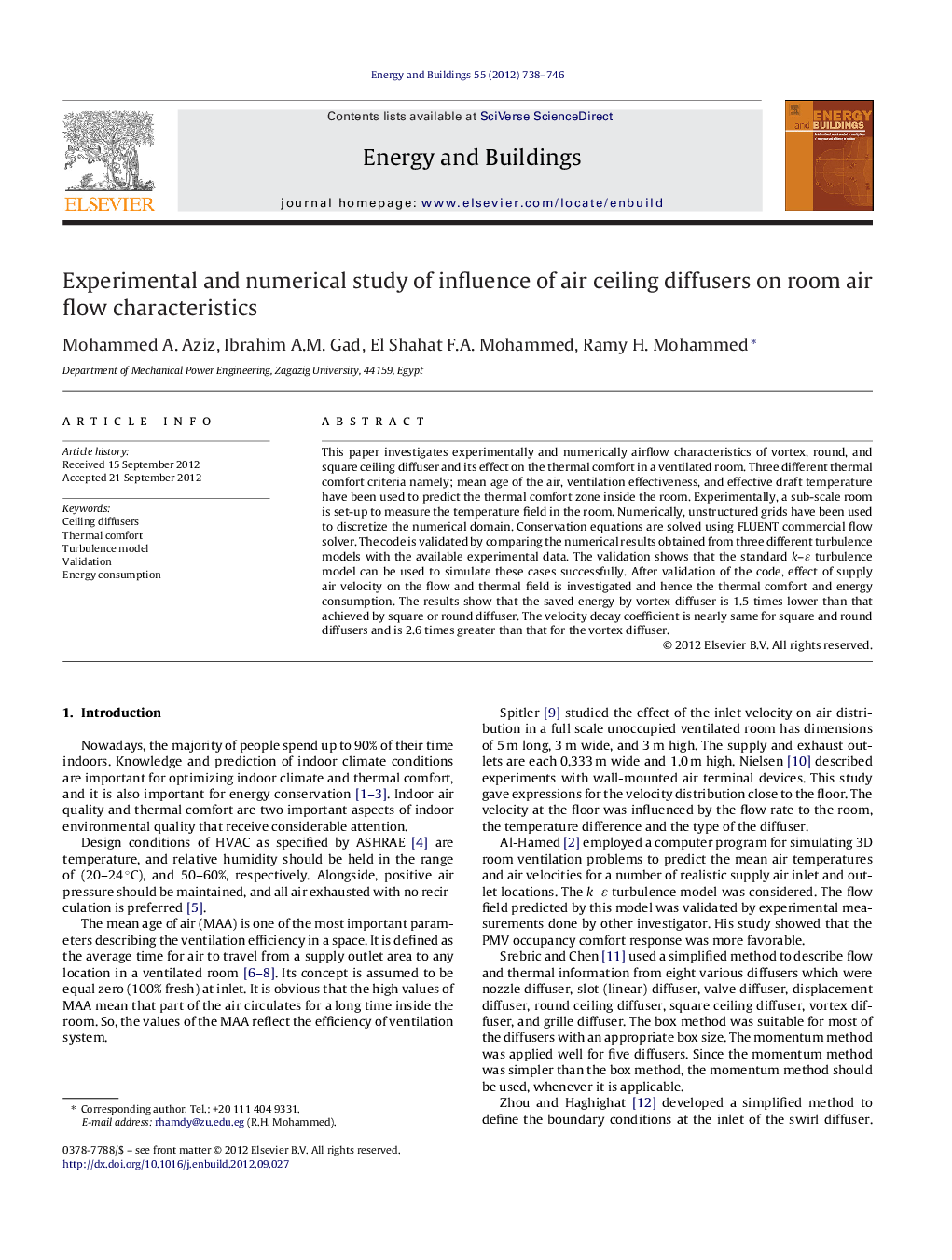| Article ID | Journal | Published Year | Pages | File Type |
|---|---|---|---|---|
| 263884 | Energy and Buildings | 2012 | 9 Pages |
This paper investigates experimentally and numerically airflow characteristics of vortex, round, and square ceiling diffuser and its effect on the thermal comfort in a ventilated room. Three different thermal comfort criteria namely; mean age of the air, ventilation effectiveness, and effective draft temperature have been used to predict the thermal comfort zone inside the room. Experimentally, a sub-scale room is set-up to measure the temperature field in the room. Numerically, unstructured grids have been used to discretize the numerical domain. Conservation equations are solved using FLUENT commercial flow solver. The code is validated by comparing the numerical results obtained from three different turbulence models with the available experimental data. The validation shows that the standard k–ɛ turbulence model can be used to simulate these cases successfully. After validation of the code, effect of supply air velocity on the flow and thermal field is investigated and hence the thermal comfort and energy consumption. The results show that the saved energy by vortex diffuser is 1.5 times lower than that achieved by square or round diffuser. The velocity decay coefficient is nearly same for square and round diffusers and is 2.6 times greater than that for the vortex diffuser.
► Three different turbulence models are tested. ► Performance of vortex, round and square ceiling diffusers is study. ► Thermal and flow field in the room are investigate. ► The vortex diffuser saves the supply fan power. ► Vortex diffuser with 45° swirling angle is preferable.
